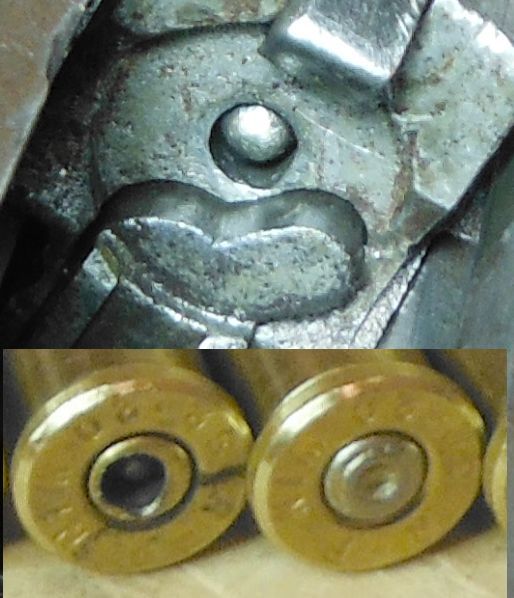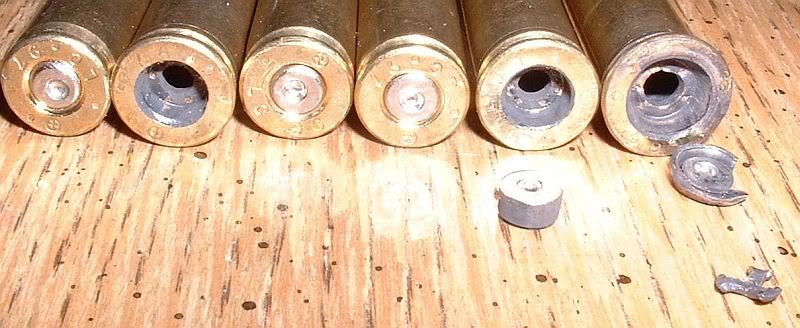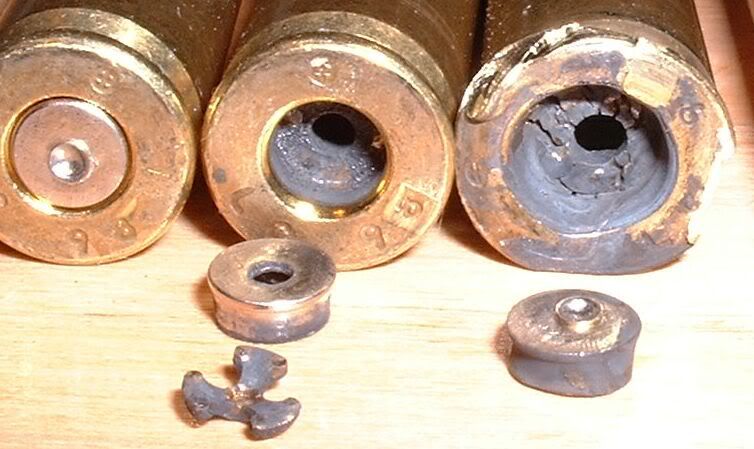I had my first encounter with what I believe are pierced primers today with my 223 Remington. Out of 69 shots today, I had 3 or 4 of them. They all seemed to come during the first 20 shots or so. The outside temp was only 80-85F.
- Factory Remmy 700 action, trued by Black Ops Precision, but I don't believe the firing pin was bushed
- Once-fired Lapua brass
- Federal small rifle match primers
- 80.5g Bergers
- 24.7g 8208 XBR
I know some of you guys are going to immediately zero in on the fact that 24.7g is above any published load data, but know that I have my bullets seated way up in the neck. I've also previously tested powder charges beyond this, and I didn't start seeing pressure until 25.3 grains. That 25.3g, I started seeing ejector marks, blown primers, and a sticky bolt. This is why I backed it off to 24.7g in the first place. At 24.7g I had no over-pressure indications. The rifle cycled fine. If I hadn't noticed these particular primers when picking up my brass, I wouldn't have known it any other way.
Any other thoughts, or am I just fooling myself?
Pierced primers

Normal primers (same day)

Close-up of the bolt face (black Cerakote wearing off)

- Factory Remmy 700 action, trued by Black Ops Precision, but I don't believe the firing pin was bushed
- Once-fired Lapua brass
- Federal small rifle match primers
- 80.5g Bergers
- 24.7g 8208 XBR
I know some of you guys are going to immediately zero in on the fact that 24.7g is above any published load data, but know that I have my bullets seated way up in the neck. I've also previously tested powder charges beyond this, and I didn't start seeing pressure until 25.3 grains. That 25.3g, I started seeing ejector marks, blown primers, and a sticky bolt. This is why I backed it off to 24.7g in the first place. At 24.7g I had no over-pressure indications. The rifle cycled fine. If I hadn't noticed these particular primers when picking up my brass, I wouldn't have known it any other way.
Any other thoughts, or am I just fooling myself?
Pierced primers

Normal primers (same day)

Close-up of the bolt face (black Cerakote wearing off)

Last edited:




